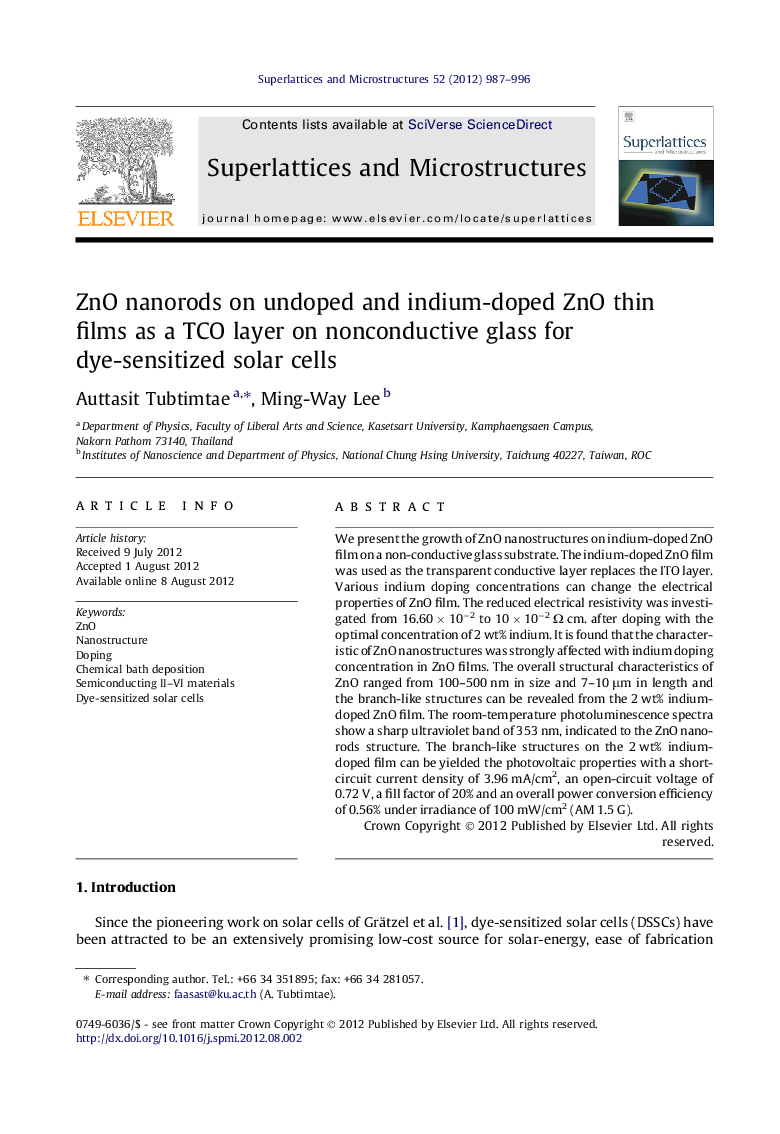| Article ID | Journal | Published Year | Pages | File Type |
|---|---|---|---|---|
| 1553927 | Superlattices and Microstructures | 2012 | 10 Pages |
We present the growth of ZnO nanostructures on indium-doped ZnO film on a non-conductive glass substrate. The indium-doped ZnO film was used as the transparent conductive layer replaces the ITO layer. Various indium doping concentrations can change the electrical properties of ZnO film. The reduced electrical resistivity was investigated from 16.60 × 10−2 to 10 × 10−2 Ω cm. after doping with the optimal concentration of 2 wt% indium. It is found that the characteristic of ZnO nanostructures was strongly affected with indium doping concentration in ZnO films. The overall structural characteristics of ZnO ranged from 100–500 nm in size and 7–10 μm in length and the branch-like structures can be revealed from the 2 wt% indium-doped ZnO film. The room-temperature photoluminescence spectra show a sharp ultraviolet band of 353 nm, indicated to the ZnO nanorods structure. The branch-like structures on the 2 wt% indium-doped film can be yielded the photovoltaic properties with a short-circuit current density of 3.96 mA/cm2, an open-circuit voltage of 0.72 V, a fill factor of 20% and an overall power conversion efficiency of 0.56% under irradiance of 100 mW/cm2 (AM 1.5 G).
► Undoped/indium-doped ZnO film as a TCO layer can be represented FTO and ITO layer. ► ZnO nanorods with branch-like structure obtained from 2 wt% indium doping. ► The immersion time of 30 min for photoelectrode, yielded the highest efficiency. ► An η of 0.56%, yielded by the optimal dye loading and indium doping conditions.
